Linear equations -> cartesian coordinates
Cartesian Coordinates
Cartesian coordinates are a system for representing points in a plane using two numbers, called the x-coordinate and the y-coordinate. This system was developed by René Descartes and is named after him. The x-coordinate represents the horizontal position of a point, while the y-coordinate represents the vertical position.
Representation
In the Cartesian coordinate system, a point is represented by an ordered pair (x, y), where x is the distance from the y-axis (measured along the horizontal axis) and y is the distance from the x-axis (measured along the vertical axis).
 width:300px;height:300px;">
width:300px;height:300px;">Quadrants
The plane is divided into four quadrants, labeled I, II, III, and IV, which are formed by the x and y-axes. The signs of the coordinates determine in which quadrant a point lies. Points in quadrant I have both positive x and y coordinates, while points in quadrant II have negative x and positive y coordinates, and so on.
Distance Formula
The distance between two points with coordinates (x1, y1) and (x2, y2) can be calculated using the distance formula:
distance = sqrt((x2 - x1)^2 + (y2 - y1)^2)
Study Guide
Here are some key topics to study when learning about Cartesian coordinates:
- Understanding the concept of ordered pairs and their representation on a plane.
- Identifying points in different quadrants based on their coordinates.
- Calculating the distance between two points using the distance formula.
- Graphing linear equations and functions using Cartesian coordinates.
Practice plotting points on a graph, identifying their coordinates, and determining in which quadrant they lie. Also, work on solving problems involving the distance between two points using the distance formula.
Understanding Cartesian coordinates is fundamental for many areas of mathematics, including geometry, algebra, and calculus. It's an essential skill for visualizing and analyzing relationships between points and shapes in a plane.
.◂Math Worksheets and Study Guides Eighth Grade. Linear equations
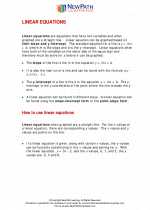
 Worksheet/Answer key
Worksheet/Answer key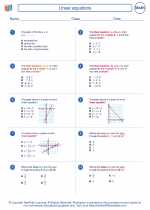
 Worksheet/Answer key
Worksheet/Answer key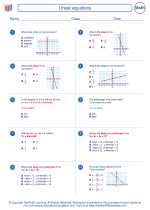
 Worksheet/Answer key
Worksheet/Answer key
 Worksheet/Answer key
Worksheet/Answer key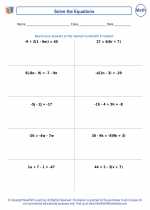
 Worksheet/Answer key
Worksheet/Answer key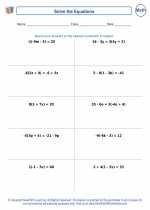
 Worksheet/Answer key
Worksheet/Answer key
